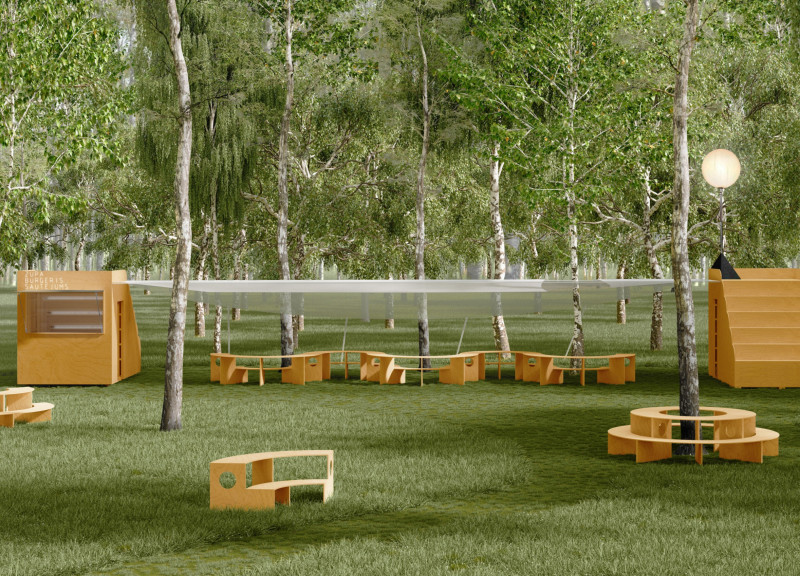5 key facts about this project
The food pavilion is located within a lively festival site and serves as a gathering space that encourages social interaction among visitors. Its design is rooted in the idea of Urban Commons, promoting a sense of community and enhancing shared experiences. By focusing on functionality and versatility, the pavilion can support various activities such as dining and performances, making it a dynamic venue for festival attendees.
Design Concept
The pavilion draws upon two main themes: the Commons and the spectacle. The Commons refers to shared resources managed by the community. This principle is reflected in the design, which emphasizes user participation in creating social spaces. A bar integrated with seating serves as a central point for gathering, encouraging casual conversations and spontaneous interactions. The architecture facilitates community engagement, making it a key element of the festival atmosphere.
Sustainability and Materiality
Sustainability plays an important role in the pavilion's design. The choice of materials is intentional, emphasizing local resources that resonate with Latvia's cultural identity. Birch and pine plywood are used in construction, valued for their availability in the region. Structural elements are joined with wooden pegs and screws, showcasing a straightforward assembly method. This material selection reinforces connections to the environment while supporting a reduced ecological footprint.
Colour and Aesthetic Integration
Colour is a significant aspect of the pavilion’s design, enhancing its visibility and inviting presence. The palette draws from the vibrant surroundings of the festival site, incorporating red, yellow, and orange tones. These colours are not only visually appealing but also create an inviting atmosphere that encourages people to gather and interact. By using colour effectively, the pavilion fosters a sense of familiarity and warmth, making it an appealing space for all.
The architecture allows for flexibility in how the space is used, providing opportunities for performance and social gatherings. Seating can easily change function, transforming into stages or areas for group activities. This multifaceted approach captures the essence of community engagement, contributing to an enjoyable experience for everyone involved.





















































